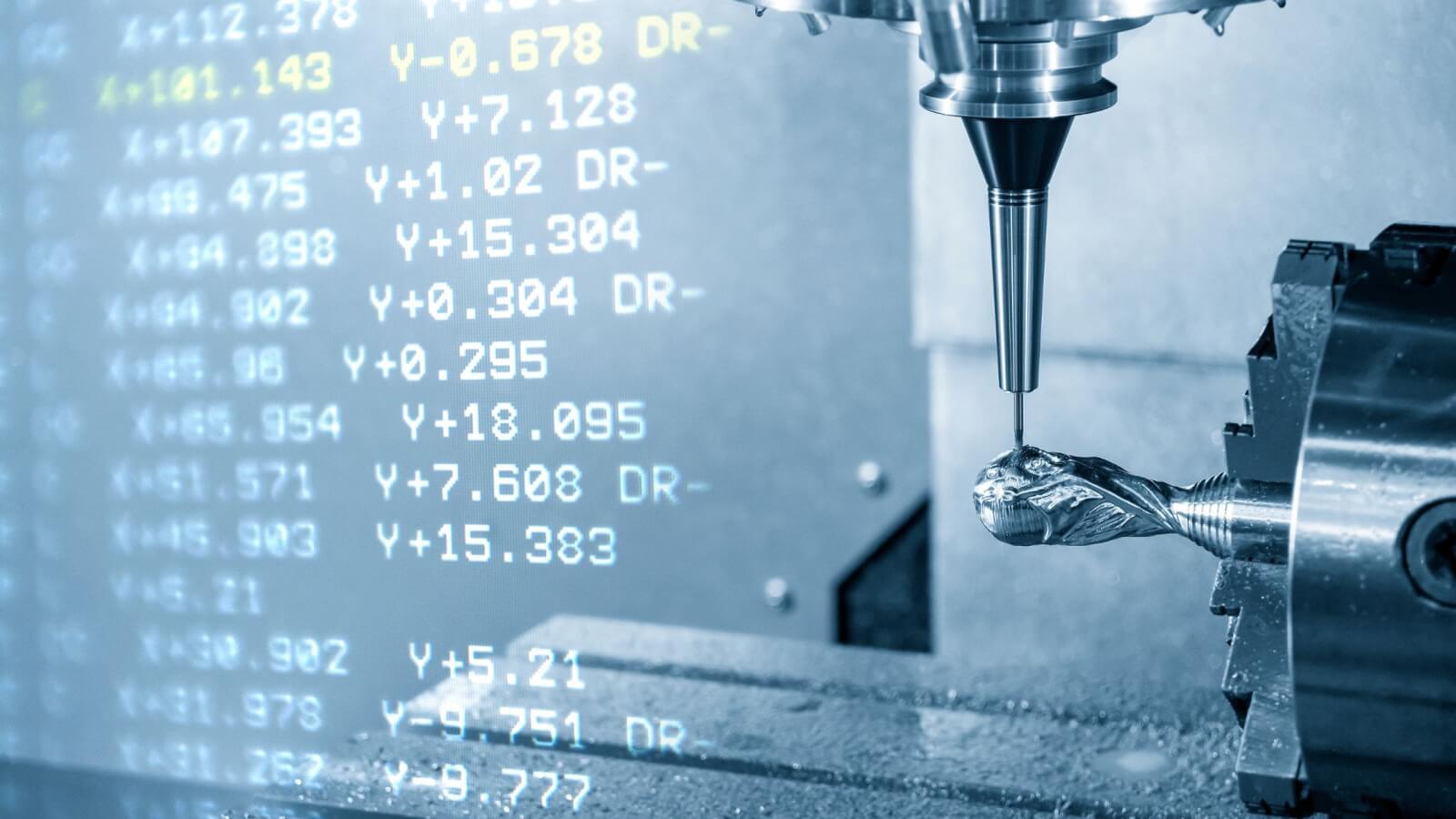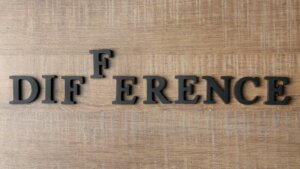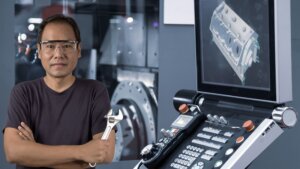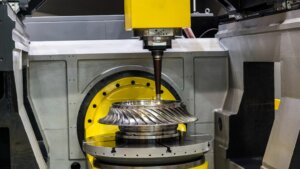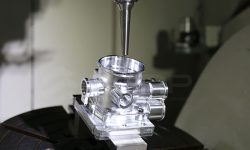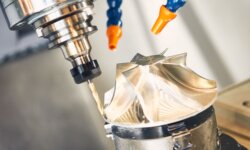CNC machining fulfils the need for a wide variety of services. For this purpose, CNC machines come in many different versions. Among these options, 3-axis CNC, 4-axis CNC, and 5-axis CNC machining are the most common options.
Professionals often wonder about the best choice between 3 vs 4 vs 5-axis CNC machining. This article will discuss in detail the difference between these three machining processes. You will also learn about the capabilities of each method.
Differences Between 3-axis, 4-axis, and 5-axis CNC
3-axis, 4-axis, and 5-axis CNC machines use the same fundamental technology. However, they have vast differences in terms of capabilities.
- Axes of Movement: The movement axes are the primary differentiating factor between the 3, 4, and 5-axis CNC machining. The degree of axes is the direction a cutting tool can move. Therefore, 5-axis CNC machining has the highest degree of cutting tool movement.
- Part Complexity: Higher-axis CNC machines can design more complex parts. This is because the cutting tool is capable of reaching more difficult angles.
- Positioning: Higher axis machines give more options for positioning. Therefore, 5-axis machines will provide the most option for positioning. 4-axis machines have moderate positioning options. 3-axis CNC machines are the most limited in terms of positioning.
- Programming: 5-axis machines require a complex program. The program will control the movement of the cutting tool in multiple directions. 5-axis machines have a lot more variables in this regard. 3-axis CNC machines have the simplest programs. 4-axis CNC is a balance between the two.
- Time Taken: 5-axis machines take the least time to finish a part. 3-axis machines take the longest time. The faster speed of 5-axis machines is attributed to the fact that multiple cutting tools work on the part simultaneously. Time taken by a 4-axis CNC is more than 5-axis but less than 3-axis.
- Operator Training: 5-axis and 4-axis CNC machines require highly trained operators because of the complex machine setup. 3-axis CNC machines can work with the low skill level of the operator. Highly skilled operator in 5-axis CNC machines also increases the operator’s salary. Operators with low skills can use a 5-axis CNC. However, he cannot unlock the machine’s full potential.
- Customization: 5-axis machines can provide a higher degree of customization. This is because the cutting tool has more freedom of movement. The part can be modified in any way desired. 3-axis machines are not that friendly towards customization. These machines require repositioning the part for customizations.
- Material Management: Certain materials are hard to machine. Using 3-axis machining processes can accelerate tool wear. Using 4-axis or 5-axis machining is easier for such materials. These machines can approach the workpiece in a way that reduces tool wear and makes machining easier.
- Tool Breakage: Multi-axis machines like the 4-axis and 5-axis provide more options in the approach position and angle of the tool. Therefore, a shorter tool can be used. This increases accuracy and reduces tool breakage. In the case of 3-axis CNC machining projects, the tool approaches the workpiece perpendicularly. This increases the tool breakage for 3-axis CNC machining.
- Tool Collison: 5-axis machines require complex programming. Any minor bugs can cause the tool to collide with the workpiece. Tool collisions are less prominent in the case of 3-axis and 4-axis machines. Tool collision can be eliminated by using advanced simulation features of CAM software.
- Secondary Finishing: 5-axis machines provide a very smooth finish to the workpiece due to high precison. However, 3-axis and 4-axis machining often require secondary finishing to improve the workpiece surface.
- Error Accumulation: 3-axis machines can work on a single face of the workpiece. Therefore, multiple setups are required. Each setup creates a certain error margin, which gets accumulated during additional setups. However, 4-axis and 5-axis machines can create precison parts in a single position. Therefore, there is no error accumulation.
What is a 3-axis CNC?
3-axis CNC machining can move the cutting tool in three directions. These directions are the X-axis, Y-axis, and Z-axis. 3-axis CNC machines are the most basic CNC equipment. The movement direction is:
- X-axis: Left to right movement of the cutting tool in the horizontal plane
- Y-axis: Up to down movement of the cutting tool in the horizontal plane
- Z- axis: Vertical movement of the cutting tools
Advantages of 3-axis CNC Machining
- Cheaper: 3-axis CNC machines are significantly cheaper than higher axis alternatives.
- Ease of Use: It is very easy to learn using 3-axis CNC machines. It doesn’t require complex training for the operators.
- Simple Programming: 3-axis CNC requires simple programming. Simple alterations in the program can make any changes to the part.
- Low Maintenance: These machines require lesser maintenance due to the simple structure of the machine.
Disadvantages of 3-axis CNC Machining
- Slower Manufacturing: 3-axis CNC machining is faster than other manufacturing methods. However, it is significantly slower than higher axis CNC machining.
- Capabilities: 3-axis CNC machines cannot create parts with complex geometries.
- Slower Production Speed: 3-axis CNC often require parts to be realigned for completely machining. This reduces the production speed in the manufacturing process.
- Single-Side Machining: 3-axis CNC can machine only one side during a single setup.
- Low Precision: Using multiple setups limits the achievable precision with 3-axis CNC.
When to Use a 3-axis CNC Machine?
3-axis CNC machines are best for applications like the following:
- Lower Budget: 3-axis CNC are the go-to machine for limited budget situations. These machines have lower investment and lower maintenance costs.
- Low Production Volume: Low volume production benefits from 3-axis CNC. These machines are simple and easy to set up. Additionally, the low cost of the machine reduces the entire production investment.
- Simple Structure: 3-axis CNC is good when parts have simple geometry. These parts should have basic shapes with no complex features.
What is 4-axis Machining?
4-axis CNC machining adds a rotation axis to the basic three axes. Therefore, in addition to the X, Y, and Z axis, these machines have a fourth axis. It is termed as the A-axis. It is the rotary axis along the X-axis.
Advantages of 4-axis CNC
- Multi-Side Machining: 4-axis CNC can work on four sides of the workpiece in a single setup. This avoids the need to have multiple setups.
- Cheaper Machining for Larger Volumes: 4-axis machines provide a cheaper overall cost for large production volumes. This is because fewer setups are required as compared to 3-axis CNC.
High Precision: Reduction of setups means that tight tolerances can be achieved.
Disadvantages of 4-axis CNC
- High machine costs: 4-axis CNC have a higher machine cost than 3-axis alternative.
- Expensive fixtures: The fixtures of a 4-axis CNC machine can be economically infeasible for basic machining on a single face.
- Limited Speed: 4-axis CNC is slower than higher-axis alternatives.
When to Use 4-axis CNC?
4-axis CNC machines are suitable for applications such as:
- Curved Surface Features: 4-axis CNC machining can machine curved surface features. It is also ideal for angled features. The angled features should be based around one axis only.
- High Tolerance: 4-axis CNC is a good fir for situations that require a higher precision than what 3-axis CNC can provide. This is because of the reduced number of setups of these machines.
- Machining Multi-sides: 4-axis CNC machining is good when working on a piece with features on multiple sides.
- High-volume Production: High-volume production can use 4-axis CNC machining efficiently.
What is 5-axis CNC Machining?
5-axis CNC machining tools have two rotary axes and three axes in linear directions. The three linear directions are:
- X-axis: Left to right movement across the work table horizontally
- Y-axis: Up to down movement across the work table horizontally
- Z-axis: Vertical movement of the cutting tools
Besides these, the rotary axes can be any two axes from the following three:
- A-axis: Rotary motion along the X-axis
- B-axis: Rotary motion along the Y-axis
- C-axis: Rotary motion along the Z-axis
Advantages of 5-axis CNC
- Complex Geometries: 5-axis CNC machining is able to work on highly complex geometries of a workpiece.
- Machinable Sides: It is possible to machine five different sides of a workpiece in a single setup.
- High Speed: The reduced number of setups provide extremely fast production speeds.
- Precision: 5-axis CNC machining can create precision parts. The single-setup machining eliminates any variances during changing setups.
Disadvantages of 5-axis CNC
- Costs: 5-axis CNC machines are very expensive when compared to 3-axis and 4-axis CNC options. There are also added costs of maintenance and operations.
- Operator Training: 5-axis CNC machines can be complicated to operate. Therefore, the operator requires specialized skill and training.
- Programming: 5-axis CNC programs are complex due to the addition of two more variables.
When to Choose 5-axis CNC Machining?
5-axis CNC machines are ideal for the following situations:
- Complex Shapes: 5-axis CNC machining is the ideal choice when machining complex shapes.
- High Volume: High production volumes are handled very well with these machines. It can reduce the cost per part for high volumes.
- Precison Parts: Precison parts for sectors like R&D, aerospace, and medical parts require 5-axis machining.
- Multi-side Machining: Parts with features on every face require 5-axis machining process.
How to Choose Between 3-axis, 4-axis, and 5-axis Machines?
Choosing between 3-axis, 4-axis, and 5-axis machining can be easier if you know the factors to consider. Here are the things to evaluate when deciding between these methods:
- Cost: Cost is the primary factor for most manufacturers. For people on a budget, 3-axis machining is the definite way to go. You can consider 4 and 5 axis CNC machining only if the budget is not a concern.
- Application: Aerospace parts, medical parts, defence equipment, aircraft parts, dental implants, and other such applications require ultra-high precision. These precison parts can only be created with multi-axis machining like 5-axis.
- Part Shape: Parts with a simple form are suitable for 3-axis machining. You can save costs by opting for 3-axis machining for such parts. However, using 3-axis for complex geometry will mean additional costs and defects. In such cases, 4-axis or 5-axis is the better choice. The choice between these two can be made based on part geometry.
- Machining Process: If you already have a CNC machine, choice between the number axis can be limited. For instance, vertical milling machines are usually capable of 3-axis movement only. A milling machine with a rotary table is a 4-axis machine. Similarly, there are also CNC milling machines with 5-axis configurations.
- Production Volume: Choose the number of axes based on the production volume you want to manufacture. Small-volume manufacturing can be met with a 3-axis machining process. However, high volume production requires multi axis options.
Endnotes
3-axis, 4-axis, and 5-axis CNC machines cater to a specific set of users. Each of these machines come at a specific price point and with its own applications. With the information provided above, you can now easily choose between these three options for your next project.
Frequently Asked Questions (FAQs)
Here are the answers to some common queries regarding 3-axis, 4-axis, and 5-axis CNC machining:
1. How does the number of axes affect the precision of the final product?
A higher number of axes mean a higher precison of the final product. This is because multi-axis machining requires lesser workpiece setups. This increases the accuracy during the machining process.
2. How does the number of axes impact the range of materials that can be used?
A higher number of axes increases the range of supported materials for CNC machining. Multi-axis machines can approach the hard-to-machine material at a more convenient angle. This provides easier machining options for hard materials.
